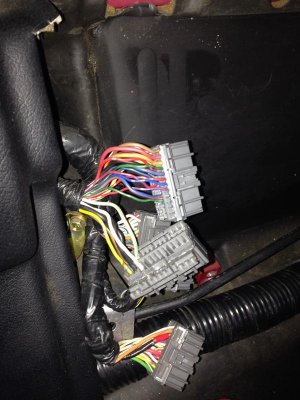So lets just double check to confirm: injectors have nothing to do with how much horsepower you will achieve. They are only sized to match the airflow, which we could call the end result as an, air fuel ratio.
My point is simply this. Throwing fuel by itself at an engine is not enough to significantly raise your horsepower output. Oh sure it will change, but it could go up OR down, and it will not go up much at all ultimately (you might gain 2% or 15%, but if you want real increase like 100% or 200% it will not happen with fuel by itself)
You need the airflow. You need to work on the airpath. Think of breathing in and exhaling. Air follows the same path in as it does out into the lungs. But this is not true for engines. You have one side dedicated to the intake and one side dedicated to the exhaust. If you put an air filter over your face you expect to breath cleaner air but it may also be harder to draw breath also. The idea of cleaning the air is a great one for both humans and engines of course, but the way it is done can have an effect on performance. Now imagine that instead of breathing through a filter on your face, you install air filters into the ROOM in which you reside, which is also perfectly sealed otherwise, such that only filtered air can enter. You will no longer notice a difficulty breathing, because filtered air is being offered to you the same way it would have been if the filter wasn't there. This would be like installing a large box with enormous filters around another small cone filter feeding the throttle body. There are rates, numbers, but I want to apply a variable to any situation, such as a cruise ship engine, so try to imagine how air would behave differently if you moved much more of it using larger tunnels. Think now of the engines airpath in the head, that is, the port leading right up to the combustion chamber. The Intake runner of the head. If the human lung is the combustion chamber, then that intake runner is the trachea. If the lungs did not have to deal with the next 90* turn of the pharynx and mouth then it would be easier to get air into and out of the lungs, just like an engine where the intake manifold and throttle body are necessary and also have turns for the air. ( and the nose is a pseudo air filter device, but we also filter our air with by other means such as trapping particulate with sticky saliva.) The amount of air necessary for life determines the size and shapes of all the tubes, such as the trachea, imagine if your trachea was twice its size now. The air would move slower but you might breath easier, especially if your air requirement suddenly increased due to exercise. When you exercise you breath "harder" because your demand for air has increased. This would be like installing a better camshaft on an N/A engine. The air is the same density as before but now we need more of it, we can top the cylinders off and increase our VE. To increase VE is the reason for the camshaft swap. A supercharger by itself is able to compress air, but that compression only happens because it is trying to move more air into the engine than the engine needs to be at same place it was when naturally aspirated (when the atmosphere was the only pressure). The difference in pressure between the port leading up to the head (intake runner in the head) and the difference in pressure inside the cylinder when the valve opens is what drives the air molecules into the cylinder, whether supercharged or not. In fact if you think backwards through the airpath, you will notice that the atmosphere is still the ultimate reason air molecules get into the engine, since the atmosphere is feeding the compressor wheel of the supercharger. Also, if we enlarge the intake manifold, the air can be adjusted to move the same rate as before we did anything. Air molecules have a weight, and are subject to invisible forces such as sound, and these properties are often engineered into the factory intake equipment you see on a vehicle, taking advantage of the weight of air molecules to time the valves with respect to the piston to fill the cylinders as much as possible at any given RPM. This is the number we measure as volumetric efficiency "VE". A 100% VE means you are filling the cylinder completely with fresh air molecules. By timing the valves right you might attain an even higher number, think of a tunnel ram or GM's Tuned Port Injection (85-92 technology). Honda especially has done a great job designing engines that do this sort of thing, and many of their engines already produce 100%VE+ with OEM equipment. This is why I do not think it is necessary to play with the OEM air path much, if at all. The only real option you have once the engine's VE is already nearly 100% is increase air density (more air molecules per unit volume).









